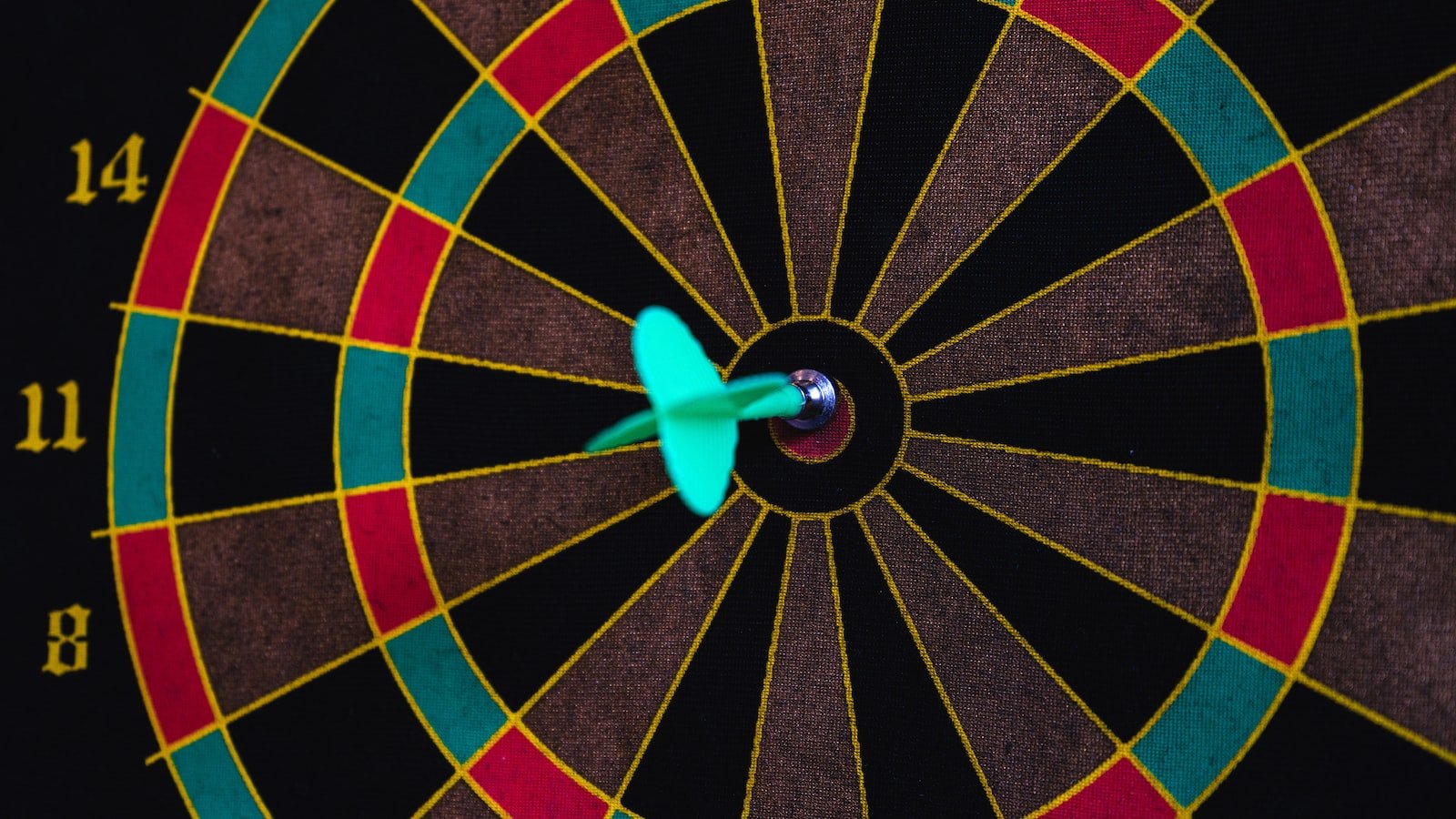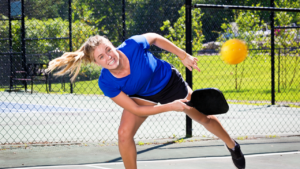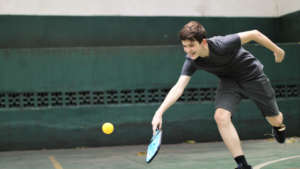The heated battle commences as players eagerly position themselves on the compact court, clutching their paddles with determination. In the realm of pickleball, where agility and precision intersect, close quarters combat reigns supreme. Welcome to the thrilling world of net game strategies, where players jostle for position and execute cunning maneuvers to dominate the ultimate social sport. From dinking finesse to strategic volleys, this article delves into the artistry and tactics that propel pickleball enthusiasts towards victory amidst the fast-paced exchanges at the net. So, tighten your grip and brace yourself for a whirlwind journey through the captivating world of close quarters pickleball strategies.
Table of Contents
- Mastering the Art of Dinking in Close Quarters
- Understanding the Importance of Third Shot Drops in Net Play
- Strategic Placement: Targeting Weaknesses in Your Opponent’s Net Game
- Maximizing Volleys: The Key to Winning Close Quarters Battles
- Mastering the Lob Shot: A Game-Changing Tactic in Close Quarters Pickleball
- Q&A
- Wrapping Up

Mastering the Art of Dinking in Close Quarters
When it comes to the fast-paced game of pickleball, having a variety of shots in your arsenal is essential. And one shot that can truly set you apart from the competition is the dink. Mastering the dink is not only a clever way to keep your opponents on their toes, but it can also be a game-changer in tight close quarters.
So, how can you become a dinking maestro?
- Controlled touch: The key to a successful dink is having impeccable control and touch on your shots. Aim for a soft, feather-like touch that barely clears the net. This delicate placement will make it challenging for your opponents to return a strong shot, giving you the upper hand in close quarters.
- Mind your paddle position: Keep in mind that the position of your paddle matters when executing a dink. Hold your paddle at a slightly upward angle, with the face open, to create a higher trajectory and a softer landing. This technique will reduce the chances of your shot sailing out of bounds or into the net.
- Patience is key: Remember to practice patience when engaging in dinking rallies. Wait for the perfect opportunity to strike, rather than rushing into a shot. Observe your opponents’ positioning, anticipate their moves, and seize the moment to deliver a well-placed dink that will catch them off guard.
takes time and plenty of practice. But by incorporating controlled touch, being mindful of your paddle position, and practicing patience, you’ll be well on your way to becoming a dinking virtuoso. Take your game to the next level with this finesse shot and leave your opponents marveling at your incredible skill.

Understanding the Importance of Third Shot Drops in Net Play
When it comes to the game of tennis, there are various strategies and techniques that players employ to gain an advantage over their opponents. One such technique that often goes unnoticed by amateurs and even some professionals is the art of third shot drops in net play.
What are third shot drops?
A third shot drop refers to the act of hitting a soft and well-placed shot over the net, from the baseline, after the opponent has returned the serve. It is a highly strategic move that aims to force the opponent into a defensive position and create an opportunity for the player to approach the net while ensuring a controlled rally.
The importance of third shot drops:
1. Gaining control of the point: By executing a well-placed third shot drop, a player can regain control of the point, shifting the momentum in their favor. It allows the player to dictate the pace of the game and put their opponent on the defensive.
2. Creating opportunities for net play: The third shot drop acts as a setup shot, inviting the opponent to hit a high ball, making it easier for the player to advance to the net and gain a positional advantage.
3. Inflicting pressure and inducing errors: A well-executed third shot drop puts the opponent in a difficult position, forcing them to choose between playing a defensive shot or attempting an aggressive shot under pressure. This often leads to unforced errors, giving the player a greater chance of winning the point.
Mastering the art of third shot drops is crucial for players seeking to elevate their net play and gain an edge on the court. It requires precision, anticipation, and sound decision-making in order to fully exploit the benefits of this strategic move.
Strategic Placement: Targeting Weaknesses in Your Opponent’s Net Game
When it comes to tennis, understanding your opponent’s weaknesses and using them to your advantage can be a game-changer. One area that often exposes vulnerabilities is the net game. By expertly placing your shots, you can force your opponent into uncomfortable positions and exploit their weaker areas. Here are some strategic tips to help you target weaknesses in your opponent’s net game:
- Study your opponent: Observing and analyzing your opponent’s playing style is crucial. Pay attention to their movement, footwork, and reaction times at the net. Identify their weaknesses, such as slow reaction speed, poor anticipation, or difficulty handling low shots.
- Play with depth: Use varying shot depths to keep your opponent off balance. By mixing deep shots with short drops, you can make it harder for them to predict your next move. This forces them to constantly adjust their position, making them more prone to errors.
- Utilize angles: Precision placement can be a powerful weapon. Aim for the corners and sidelines, directing the ball away from your opponent’s comfort zone. This forces them to move outside their ideal positioning, making it harder for them to execute strong net shots.
- Exploit weaknesses: If your opponent struggles with low shots, aim for low volleys or slices that force them to crouch down or make awkward movements. Conversely, if their overhead smashes lack power, lure them into the net and lob the ball over their head, forcing them to retreat and potentially make mistakes.
Remember, mastering strategic placement requires practice and adaptability. Continuously assess your opponent’s weaknesses during the match and adjust your tactics accordingly. By exploiting their vulnerabilities at the net, you can gain a significant advantage and increase your chances of securing victory in any tennis encounter.

Maximizing Volleys: The Key to Winning Close Quarters Battles
In the heat of battle, close quarters combat can be intense and unforgiving. It’s crucial to have a strategy that maximizes your chances of coming out on top. One technique that can give you the upper hand in these situations is mastering volleys.
Volleys are a synchronized and rapid series of shots fired by a group of soldiers, typically using firearms. They can create a devastating impact on the enemy, creating chaos and confusion. Here are some tips to help you maximize the effectiveness of your volleys:
- Stay in formation: Maintaining a tight formation is essential for executing successful volleys. It allows for better communication and coordination amongst your team, ensuring that everyone is on the same page and ready to unleash a devastating wave of fire.
- Timing is everything: A well-timed volley can catch your opponent off guard, giving you a critical advantage. Utilize tactics such as suppressing fire or distraction maneuvers to create the perfect opportunity to unleash your volley.
- Accuracy over quantity: While it may be tempting to unleash a barrage of shots, precision and accuracy are the keys to success. Train your team to focus on their aim, prioritizing hitting vital targets over mindlessly spraying bullets.
By mastering the art of volleys, you can turn the tide of close quarters battles in your favor. Remember, practice makes perfect, so hone your skills and synchronize your firepower to become a force to be reckoned with on the battlefield.
Mastering the Lob Shot: A Game-Changing Tactic in Close Quarters Pickleball
The Lob Shot: An Unstoppable Weapon
In the thrilling realm of close quarters pickleball, the lob shot emerges as a game-changer, a tactical stroke that can turn the tables in an instant. This artful maneuver takes skill, finesse, and impeccable timing, but once mastered, it unveils a world of possibilities for players who dare to embrace its power.
Picture this: locked in a fierce battle at the no-volley zone, your opponents swiftly closing in, anticipation burning in the air. Suddenly, you unleash an exquisitely crafted lob shot. As the ball gracefully arcs over their heads, their hurried scramble to retrieve it begins. The secret weapon has been locked and loaded.
But what sets the lob shot apart from other strokes? This majestic shot offers a unique advantage. It creates valuable time and space, disrupting your opponents’ strategy and providing an opportunity for you to regain control. With a well-executed lob shot, you can shift the dynamics of the game, allowing yourself a crucial breathing space and a chance to reset your position on the court.
Embark on a journey to mastery as we delve into the art and science of the lob shot. Learn the secrets of elevation, spin, and precision as we unravel the tactics behind this game-changing stroke. Discover how to deceive, outsmart, and strategically place the ball to leave your opponents in awe. With our expert tips and guidance, you’ll have the tools to unlock the full potential of the lob shot and revolutionize your close quarters pickleball game. Prepare to elevate your play to new heights.
Q&A
What are some effective strategies for playing net game in pickleball?
Some effective strategies for playing net game in pickleball include being aggressive and maintaining control of the kitchen, using dinks and drops to keep the opponent off balance, and anticipating the opponent’s shots to get into position quickly.
How can I be more aggressive during the net game in pickleball?
To be more aggressive during the net game in pickleball, try to take control of the kitchen by hitting powerful shots and placing them away from your opponent’s reach. Additionally, focus on staying close to the net and being ready to pounce on any opportunity.
What are some important factors to consider when using dinks and drops in pickleball?
When using dinks and drops in pickleball, it’s crucial to focus on precision and control. Aim for the opponent’s feet or the sidelines to make the shots difficult to return. Remember to vary the pace and placement to keep your opponent guessing.
How can I anticipate my opponent’s shots in net game?
To anticipate your opponent’s shots during the net game, pay close attention to their body positioning, paddle angle, and shot preparation. By observing these cues, you can start moving towards the anticipated shot direction even before your opponent hits the ball.
Should I always try to stay close to the net in pickleball?
Staying close to the net in pickleball can be advantageous as it gives you better control and quick reaction time. However, it’s important to adjust your positioning based on the situation. If you anticipate a lob or a deep shot, it’s wise to move back to give yourself enough time to retrieve it.
Wrapping Up
As the final whistle blows and the net game dust begins to settle, one thing becomes undeniably clear – the realm of pickleball is as dynamic as it is captivating. It’s a sport that thrusts players into the heart of the action, where precision and agility take center stage. Throughout this article, we’ve explored the intricacies of close-quarters combat, shedding light on the strategic maneuvers that elevate players from mere competitors to veritable masters of the game.
From the very first serve, the net game in pickleball demands an unwavering focus, a shrewd understanding of opponents’ intentions, and an uncanny ability to anticipate their next move. It’s a dance between adversaries, where the net acts not only as a physical barrier but also as a portal into the mind of your competitor. Each move is a calculated risk, a metaphorical chess piece cast upon the board.
We’ve traversed the realm of dinks and dives, witnessing the deft touch with which players manipulate the ball, softly guiding it over the net to perplex their foes. The power of the drop shot has been revealed, a weapon capable of testing the limits of even the most seasoned opponents. And let us not forget the intricate art of the third-shot drop, a technique that combines finesse and strategy to seize control of the rally.
But perhaps most intriguing is the mind game embedded within this sport’s close quarters. The game’s true enigma lies in deceiving your adversary, making them question their own instincts, and forcing errors where they least expect them. The ability to read the game’s ebb and flow, to anticipate the trajectory of the ball, becomes a vital weapon in itself.
As we bid farewell to the realm of the net game strategies, let us carry these newfound insights to the pickleball court. Armed with the knowledge of dinks, drops, and psychological warfare, we embark on a new journey – one where precision and cunning will reign supreme. So, let us lower our paddles with anticipation, knowing that with each match, the thrill of facing opponents head-on in the close quarters battle awaits. This is pickleball, and the net game strategies shall forever be the untamed heart of the game.
As an affiliate, my content may feature links to products I personally use and recommend. By taking action, like subscribing or making a purchase, you’ll be supporting my work and fueling my taco cravings at the same time. Win-win, right?
Want to read more? Check out our Affiliate Disclosure page.




